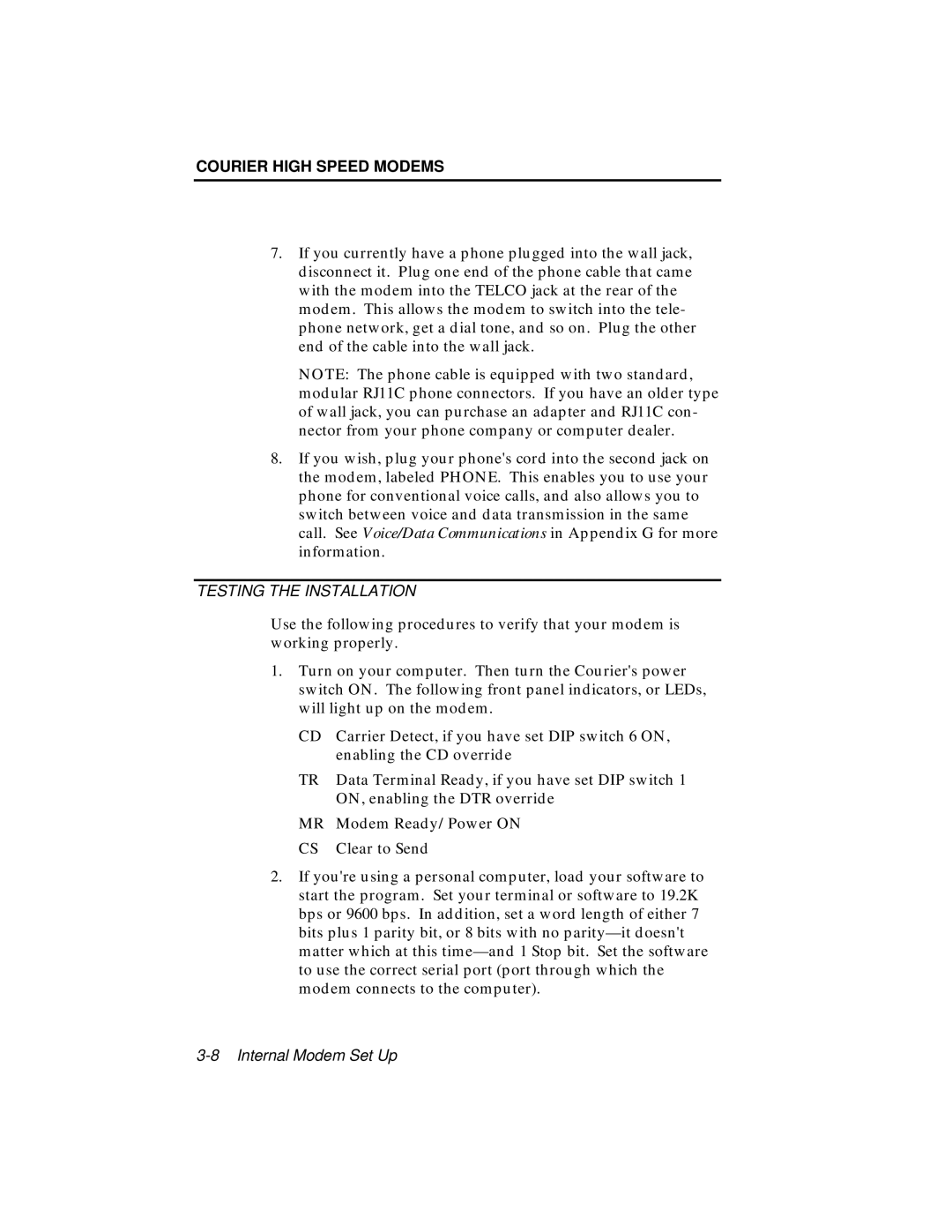
COURIER HIGH SPEED MODEMS
7.If you currently have a phone plugged into the wall jack, disconnect it. Plug one end of the phone cable that came with the modem into the TELCO jack at the rear of the modem. This allows the modem to switch into the tele- phone network, get a dial tone, and so on. Plug the other end of the cable into the wall jack.
NOTE: The phone cable is equipped with two standard, modular RJ11C phone connectors. If you have an older type of wall jack, you can purchase an adapter and RJ11C con- nector from your phone company or computer dealer.
8.If you wish, plug your phone's cord into the second jack on the modem, labeled PHONE. This enables you to use your phone for conventional voice calls, and also allows you to switch between voice and data transmission in the same call. See Voice/Data Communications in Appendix G for more information.
TESTING THE INSTALLATION
Use the following procedures to verify that your modem is working properly.
1.Turn on your computer. Then turn the Courier's power switch ON. The following front panel indicators, or LEDs, will light up on the modem.
CD | Carrier Detect, if you have set DIP switch 6 ON, |
| enabling the CD override |
TR | Data Terminal Ready, if you have set DIP switch 1 |
| ON, enabling the DTR override |
MR | Modem Ready/Power ON |
CS | Clear to Send |
2.If you're using a personal computer, load your software to start the program. Set your terminal or software to 19.2K bps or 9600 bps. In addition, set a word length of either 7 bits plus 1 parity bit, or 8 bits with no
